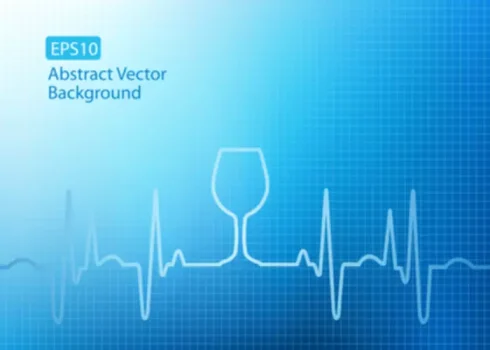
Evidence suggests that medications that inhibit calcium channel function (i.e., calcium channel blockers such as nimodipine) can relieve the seizures accompanying alcohol withdrawal (Valenzuela and Harris 1997). Alcohol might also increase inhibitory neurotransmission by increasing the activity of inhibitory neuromodulators, such as adenosine. Activation of the adenosine system causes sedation, whereas inhibition of this system causes stimulation. Stimulants that inhibit the actions of adenosine include caffeine as well as theophylline, a chemical found in tea.
Dopamine’s Role in Behavior
Motivation — a process by which stimuli (e.g., the smell of food) come to trigger responses to obtain a reward (e.g., a palatable food) or to avoid a punishment (e.g., a painful electrical shock) — generally serves to maintain bodily functioning and ensure survival. Dopaminergic neurons reach not only the NAc, but also other areas of the extended amygdala as well as parts of the septo-hippocampal system. Consequently, dopamine acts at multiple sites to control the integration of biologically relevant information that determines motivated responding. Healthy relationships and social connections are crucial in addiction recovery, as they promote the release of oxytocin and foster feelings of trust, empathy, and support. Parkinson’s disease and certain metabolic disorders, for instance, can deplete dopamine.
- However, 5HT2a has been shown to couple to Gi in some brain regions, notably the cortex (Berg et al., 1998).
- Contrarily, 5-HIAA concentrations in the caudate, substantia nigra, or hippocampus of experimental animals were not significantly different than in control monkeys.
- It should be noted, however, that our study utilized electrical stimulation to induce dopamine release.
- These changes can result either in the inhibition or the excitation of the signal-receiving neuron, depending on the cell affected.
Beyond the serotonin deficit hypothesis: communicating a neuroplasticity framework of major depressive disorder
Raphe nuclei neurons extend processes to and dump serotonin onto almost the entire brain, as well as the spinal cord. Serotonin plays a role in many brain processes, including regulation of body temperature, sleep, mood, appetite and pain. Problems with the serotonin pathway can cause obsessive-compulsive disorder, anxiety disorders and depression.
Demographic and psychometric data
Our findings are the first to identify the dopamine-related functional connections underlying alcohol-related AB in humans. The results point to a significant role of dopamine for both alcohol and non-drug reward AB and indicate that specific dopamine-dependent functional connections between frontal, limbic, striatal, and brainstem regions mediate these behaviors. As previously noted, long-term alcohol use may lead to a decrease in GABAA receptor function. In the absence of alcohol, the reduced activity of inhibitory GABA neurotransmission might contribute to the anxiety and seizures of withdrawal.
- Another atypical antipsychotic drug, quetiapine, has been evaluated in a case study [160] and an open‐label study [161] in patients with alcohol dependence and comorbid psychiatric diagnosis.
- On the other hand, viral over-expression of 5HT1b on projection neurons of the NAc shell increases alcohol-seeking behavior in male rats by altering the micro-structure of drinking bouts at different phases of alcohol exposure (Furay et al., 2011).
- During drinking maintenance, 5HT1b over-expression did not change the amount of total alcohol consumed, but promoted longer drinking bouts.
- Serotonin is another neurotransmitter that is affected by many of the drugs of abuse, including cocaine, amphetamines, LSD and alcohol.
Exploring the Connection Between ADHD and Sleep Disorders: Pathophysiology, Treatment, and Clinical Implications

In addition, haloperiodol dose‐dependently reduced operant self‐administration of alcohol in rats [134] as well as decreased alcohol presentations in the self‐administration model [132]. Supportively, low doses of dopamine D2 receptor antagonists inhibit the rewarding properties of other drugs of abuse in rats [135, 42, 136]. It should be noted that some studies have shown contradicting effects [137–139], indicating that the role of dopamine in alcohol‐mediated behaviours in complex. The bed nucleus of the stria terminalis (BNST), has been implicated with increased alcohol consumption after exposure and withdrawal [33]. The BNST is a hub of stimulatory input from cortical and limbic regions, as well as feedback from several including the hippocampus, PFC, paraventricular nucleus of the hypothalamus, ventral tegmental area, locus coeruleus, and dorsal raphe nuclei. Serotonergic signaling is prominent in the BNST, and has been shown to mediate stress and anxiety-like behavior [49].
Medications That Affect Dopamine Levels
Interestingly, this difference in expression does not coincide with a difference in 5HT1a receptor binding in any brain region. In humans, however, 5HT1a binding is higher in women across cortical and subcortical regions (Jovanovic et al., 2008). This sex difference in humans may be hormone-dependent, though, as studies that control for endogenous hormone fluctuations in men and women, particularly those related to estrogen, do not report differences in 5HT1a receptor expression or binding (Moses-Kolko et al., 2011). These estrogen fluctuations across the ovulation how does alcohol affect dopamine cycle and the lifespan in women could also contribute to the inconsistent findings regarding brain serotonin levels in men and women, especially given that estrogen can modulate many aspects of the serotonin system (see below). In mice, the 5HT1b receptor inhibits 5HT release to a greater extent in females than in males, suggesting that it serves as a more effective auto-receptor in females (Jones et al., 2005). This may have important consequences for behavior, as female 5HT1b knockout mice display a behavioral despair phenotype while male 5HT1b knockouts do not.

Investigations of the underlying dopaminergic mechanisms involved during the development and maintenance of alcohol dependence could identify novel targets. Human and rodent experimental studies show that dopamine receptor antagonists, agonists and partial agonists as well as dopamine stabilizers influencing dopamine transmission, alter alcohol‐mediated behaviours and thus may be potential treatment targets for alcohol dependence. Although there exists promising preclinical results, the majority of placebo‐controlled randomized https://ecosoberhouse.com/ clinical trials with traditional dopamine antagonists and agonists have so far have been discouraging. Furthermore, the severe side-effect profiles of many of these compounds may limit their clinical use. Newer dopamine agents, such as partial agonists and dopamine stabilizers, attenuate alcohol‐mediated behaviours in rodents as well as humans. Preclinical as well as clinical studies have shown that substances indirectly targeting the mesolimbic dopamine system may be potential targets for attenuation of alcohol reward.

لا تعليق